Miccosukee Swampwalk
I spent this past Sunday morning slogging through the eastern edge of the Miccosukee Everglades. The Everglades, at the tail end of a bountiful rainy season, are finally looking like the river of grass that they ought to be. For the past several years South Florida has been in a serious drought, but this year has brought us a much needed replenishment of rainwater.

More photos below the jump…
To put the area I walked into perspective, here is a view of the area from Google Earth:
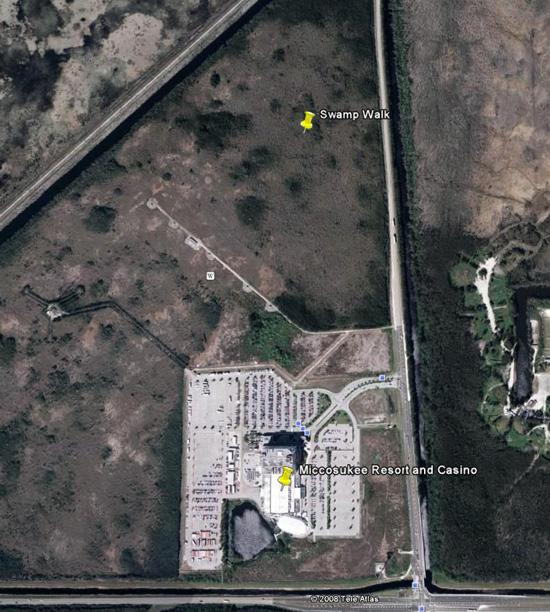
The area where I took photos is marked as “Swamp Walk”. The Miccosukkee Tribe Resort and Casino is just to the south at the crossroads of the Tamiami Trail (East/West) and Krome Avenue (North/South).

Here is a look south across the shallow “river of grass” towards the Casino. The amount of traffic the casino was getting at 10 a.m. on a Sunday morning was (frighteningly) impressive.

This is a view to the “undeveloped” north-west. It is not actually undeveloped because just beyond the line of invasive Australian melaleuca trees is a large canal that re-routes water from it’s natural flow through the Everglades and instead channels it along the edge of suburbia.
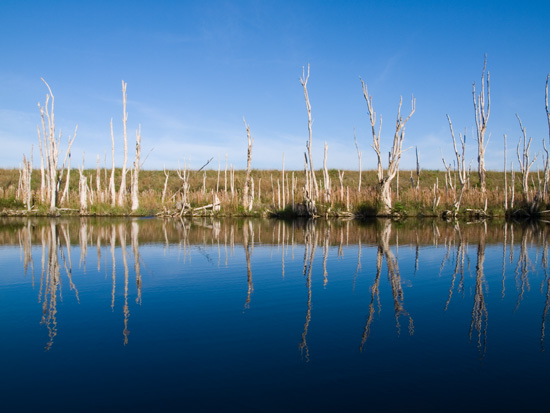
A row of dead melaleuca tree trunks lines the bottom of a significant berm/ dike that holds back water to the north in the Everglades, and forces the water flow to be controlled via a complex system of canals and locks. No alligators in sight today.
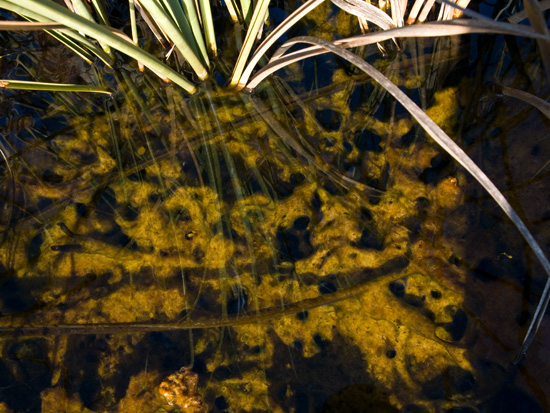
During the dry season this area is usually, well, dry. But currently during the wet season this “field” is immersed in about 1-2 feet of water. Much of the bottom is covered in a thick mat of green/brown cyanobacteria (be glad the bottom of your aquarium doesn’t look like this!). Reeds (top of photo) and sawgrass are the dominant vegetation across the area.

Green filamentous algae flourishes under the Floridian sun and open sky. Millions of trapped oxygen bubbles attest to the photosynthetic power (and tenaciousness) of the algae.

Bladderwort (Utricularia sp.) is a common aquatic plant species at this location. Bladderwort is a carnivorous plant; it’s ‘bladders’ capture small aquatic organisms’ that get trapped inside. They produce beautiful bright yellow orchid-like flowers that brighten the swampscape.
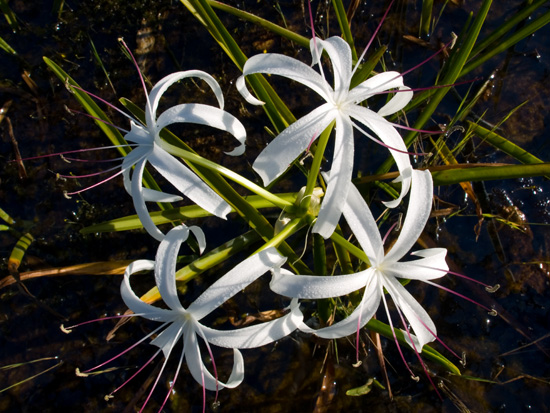
The string, or swamp lily (Crinum americanum) is a beautiful wetland wild flower native to the Everglades. For good reason, it has since become popular as an ornamental plant. Freshwater planted aquarium enthusiasts will recognize the genus Crinum as that of their “onion plants” that produce lovely strap-like leaves.
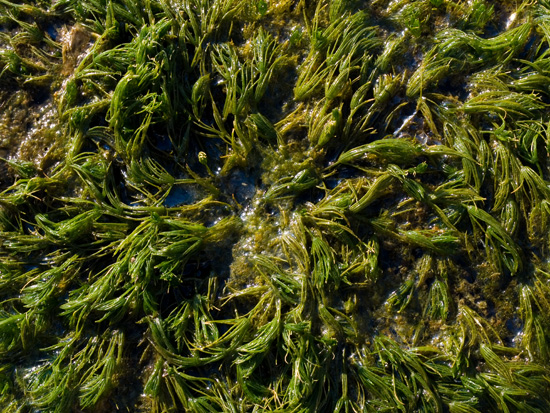
A mat of half-submersed hornwort (Ceratophyllum demersum). Hornwort is a common aquatic plant in South Florida.

A proteinaceous slick reflects the sun as it covers a section of water in the swamp. Folks say protein skimmers don’t work in freshwater, but I’d bet money you’d get foam in water like this.
